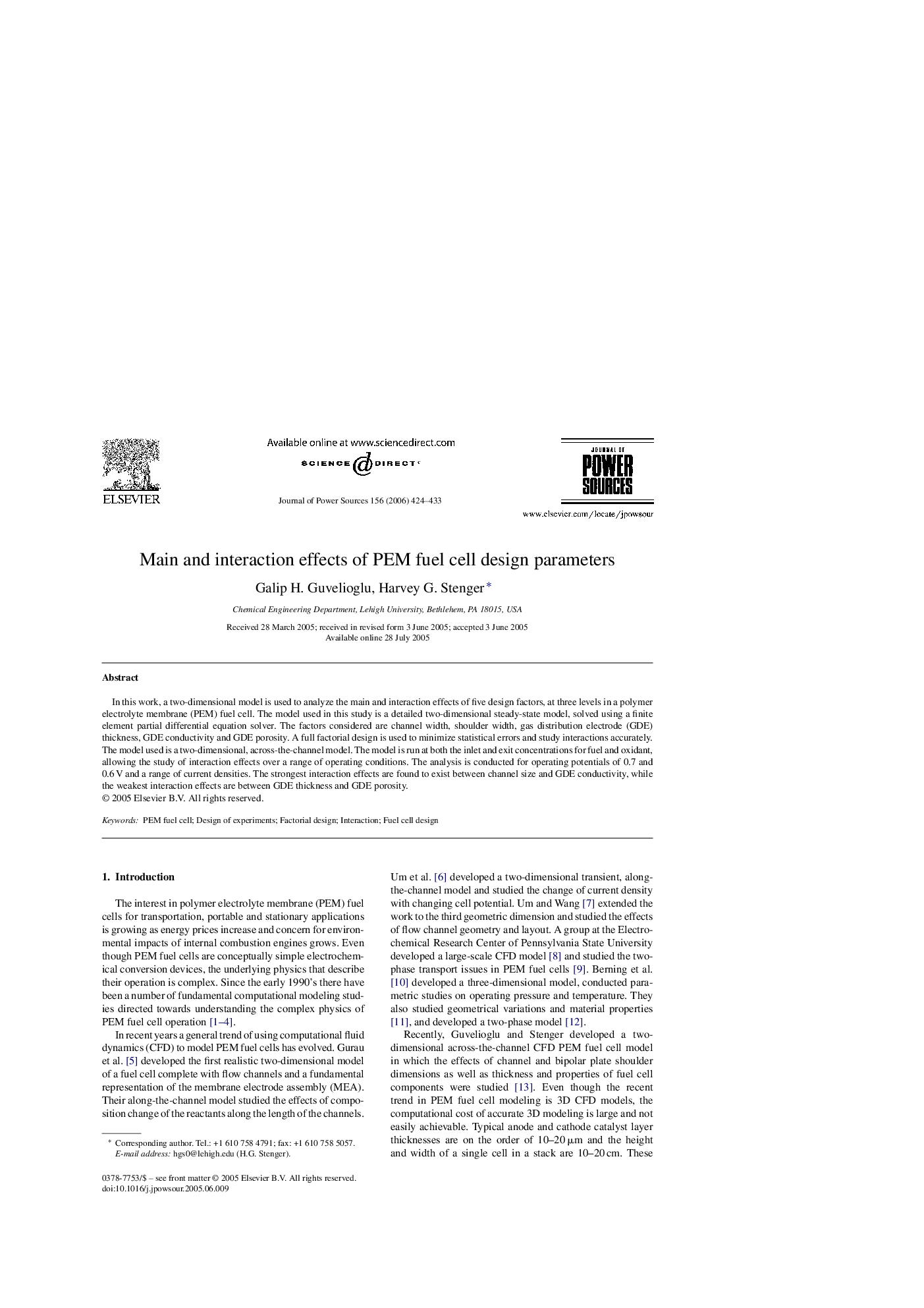| Article ID | Journal | Published Year | Pages | File Type |
|---|---|---|---|---|
| 1295045 | Journal of Power Sources | 2006 | 10 Pages |
In this work, a two-dimensional model is used to analyze the main and interaction effects of five design factors, at three levels in a polymer electrolyte membrane (PEM) fuel cell. The model used in this study is a detailed two-dimensional steady-state model, solved using a finite element partial differential equation solver. The factors considered are channel width, shoulder width, gas distribution electrode (GDE) thickness, GDE conductivity and GDE porosity. A full factorial design is used to minimize statistical errors and study interactions accurately. The model used is a two-dimensional, across-the-channel model. The model is run at both the inlet and exit concentrations for fuel and oxidant, allowing the study of interaction effects over a range of operating conditions. The analysis is conducted for operating potentials of 0.7 and 0.6 V and a range of current densities. The strongest interaction effects are found to exist between channel size and GDE conductivity, while the weakest interaction effects are between GDE thickness and GDE porosity.
